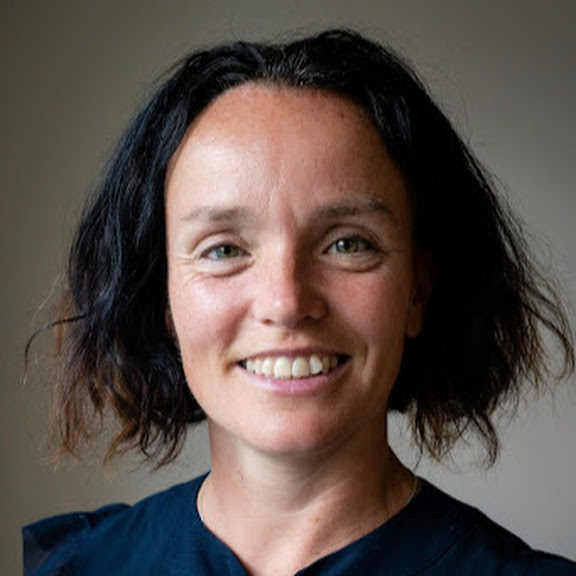News
The femtech companies taking on Big Tech over digital censorship

Campaigners say more femtech companies are taking a stand against major tech platforms such as Meta, Google, Amazon and LinkedIn, over digital censorship.
In March, six leading startups in the femtech space filed formal complaints with the European Commission over systemic bias and discrimination in content moderation by major online platforms.
Led by advocacy campaign CensHERship and blended-finance investment portfolio The Case For Her, the start-ups are invoking the Digital Services Act (DSA) to expose how platforms disproportionately restrict, shadow ban and remove health-related content aimed at women.
Now CensHERship has told Femtech World that since taking action, a number of other companies have come forward to file complaints related to similar challenges.
“The more we uncover about online censorship, the more we see how it disproportionately impacts FemTech businesses,” say co-founders, Anna O’Sullivan and Clio Wood.
“This issue extends far beyond the six complaints we’ve submitted. We’ve been contacted by a number of other businesses facing the same challenges, many of whom would now also like to file complaints. This is in addition to the 100+ businesses, charities, and creators we’ve engaged with in our research over the past year. It’s clear that the censorship and restrictions being faced are not isolated ‘mistakes’ but part of a broader, systemic issue that needs real attention and reform.”
Evidence collected by CensHERship has found multiple cases of medically accurate, expert-led content related to women’s health—including menopause, libido and reproductive health—being blocked, taken down and/or labeled as ‘political’ or ‘adult content’.
A 2025 report by Center for Intimacy Justice into the suppression of content on sexual and reproductive health for women and people of diverse genders, found that 84 per cent of businesses had ads rejected on Meta (Facebook, Instagram) and 64 per cent had product listings removed on Amazon, while 66 per cent of respondents had ads rejected on Google.
In a separate survey of 95 brands, creators, medical professionals, charities, consumers and professionals, carried out by CensHERship, 95 per cent of respondents reported at least one issue with the censorship of women’s health and/or sexual wellbeing content online, with 17% reporting up to 10. These were reported on platforms including Instagram, Facebook, Tik Tok, YouTube, X, LinkedIn and Google.
Among tose impacted are at-home fertility kits from Bea Fertility, vaginal health brand Aquafit Intimate, online sexual and reproductive health and wellbeing platform Geen, sexual health and wellbeing platform HANX, breastfeeding support app Lactapp, and gynaecological health platform Daye.
Bea Fertility ploughed months of work into becoming a Prime-rated seller on Amazon for its at-home fertility kit, building a bank of verified and positive customer reviews, and creating what’s known as ‘A+ content’ for its storefront.
But the Amazon reviews team rejected the page, taking issue with the use of the word ‘vagina’ and ‘vaginal canal’ within the description (there was no issue with the use of the word ‘semen’).
The company replaced the word ‘vagina’ with ‘birth canal’, despite feeling this was ‘insensitive’ and ‘crass’ given it is a fertility product, before pulling its products from Amazon at the end of January 2025.
Aquafit Intimate has faced wrongful restrictions on LinkedIn for a post related to World Menopause Day. Despite LinkedIn apologising for mistakenly identifying the content as nudity, a repost was again restricted and further posts about Endometriosis, Postpartum Recovery, and Vaginal Dysbiosis removed as “illegal products and services.”
“This creates financial barriers, restricts market access, and ultimately limits consumer access to science-based health information,” says CensHERship.
“There’s a clear link between this systemic digital suppression and the hindrance of progress in women’s healthcare.”

CensHERship co-founders, Anna O’Sullivan and Clio Wood.
“Vague and inconsistent explanations”
As well as content restriction, and removals which don’t appear to be in line with terms and conditions, brands say they have received ‘vague and inconsistent’ explanations for content takedowns, with little opportunity to appeal.
Daye, which has developed a HPV-screening tampon for detecting high-risk HPV infections, says an ad featuring a pregnant woman and referencing the word ‘vaginal’ was incorrectly flagged and removed under Google’s Adult Nudity and Sexual Activity policy. The company says this classification is both “inaccurate and discriminatory”.
“Daye has repeatedly reached out to both Meta and Google regarding misapplied content policies, seeking a proper resolution,” Valentina Milanova, founder & CEO of leading gynaecological health company and virtual women’s health clinic Daye, told Femtech World.
“The responses received have been generic, insufficient and lacking valid justification. These interactions reveal a fundamental misunderstanding of women’s and assigned female at birth health issues, evidenced by the inaccurate classification of relevant content.
“Throughout 2024 alone, Daye filed dozens of appeals but didn’t receive any meaningful explanations or corrective measures. This underscores the systemic failure of these platforms’ appeals processes and human review mechanisms.”

Valentina Milanova, Daye
Significant revenue losses
Some businesses report losing significant revenue due to blocked ads and suspensions, making it harder to compete and secure investment.
In the Center For Intimacy Justice report, survey respondents estimated annual revenue losses ranging from $10,000 to $1 million per company on Amazon alone, with Meta’s content restrictions causing potentially up to $5 million per entity in losses annually.
Female-focused condom brand, HANX, has had ads for its doctor-approved libido supplement for women, which is sold in major UK pharmacy retailers including Boots, rejected or heavily penalised. Its organic posts have also been repeatedly flagged as adult content, including a static post spotlighting the World Health Organisation’s report into decline of condom usage and rising STIs.
In December 2024, HANX’s Meta account was suspended for six-days, blocking its ability to reach followers and customers. It was only reinstated after a co-founder secured support from a senior Meta employee via a personal connection.
Speaking to Femtech World, HANX co-founder Dr Sarah Welsh, says: “Despite following Meta’s guidelines, HANX has faced repeated censorship – our educational posts flagged, our ads rejected, and even our entire account suspended without warning. At one point, our ad account was suspended entirely during a peak sales period, cutting off a vital revenue stream.
Meta’s own ad policy states that adverts can “promote sexual and reproductive health or wellness, as long as the focus is on health and not sexual pleasure or enhancement, and they target people aged 18 or older. This includes ads for: Birth control products, including condoms.”
However, despite being a common symptom of menopause, low libido in women is not considered to be a health condition under Meta’s guidelines. Meanwhile, male-focused erectile dysfunction ads are consistently approved.
“Meta’s restrictions have forced us to spend countless hours reworking content, appealing unfair rejections, and navigating unclear policies – only to see misleading health products and male-focused ads thrive,” continues Dr Welsh.
“This double standard doesn’t just hurt our business; it stops people from accessing safe, medically-backed information about their own health. Censorship like this isn’t just frustrating – it’s actively harming innovation in women’s health.”
“The silencing of women’s health must end”
With the support of CensHERship and The Case For Her, the startups are now urging the European Commission to investigate platform policies and hold tech giants accountable for applying content moderation rules fairly and transparently.
They are also calling on digital platforms to implement clear, non-discriminatory advertising guidelines that protect conversations about women’s health, and ensure there are accessible and effective appeal mechanisms.
Cristina Ljungberg, co-founder and partner at The Case for Her, commented: “When femtech companies and nonprofits providing critical health information are suppressed by Big Tech, they struggle to reach the people who need them most. This isn’t just about lost revenue—it’s about blocking access to essential care. The silencing of women’s health must end.”
Femtech World has contacted Meta, Amazon, LinkedIn and Google for comment, but had not received a response at the time of publication.
Hormonal health
AI-powered women’s health companion Nexus launches in UK

The first AI-powered health companion designed exclusively for women is launching in the UK today.
Nexus provides a unified fitness, nutrition, medication and cycle tracking solution alongside a personal digital health coach.
Unlike other health apps built for isolated concerns, Nexus recognises that women’s health is interconnected.
Powered by a proprietary AI model and guided by Nova, the in-app AI health coach, Nexus connects the dots between every aspect of a woman’s wellbeing, from hormonal cycles to nutrition and mental health, and provides personalised, evidence-based guidance in real time.
Co-founder Leo Tyson has worked with over a thousand women in his role as a personal health coach, but wanted to support even more women through their health journeys.
Tyson said: “Nexus gives every woman a health coach in her pocket and the knowledge to become her own expert.
“I would see women desperate for guidance but unable to afford one-on-one coaching.
“They would try to patch together information from different apps or cheaper coaches, often making things worse rather than better.
“At the same time, the sector has been missing an integrated platform that understands women’s health is not just their cycles, but their whole health story.
“Our mission with Nexus is to give every woman at every life stage the personalisation, clarity and support of a one-to-one health coaching, at an accessible price.”
The launch draws on extensive research in Nexus’ white paper The Period App Problem, which revealed that many women feel disappointed by menstrual tracking apps that fail to deliver meaningful, personalised insights.
Nexus bridges this gap with a female-specific onboarding process offering over 50,000 unique combinations of personalised wellness insights.
With Nova, users also have access to an AI coach that truly knows them, offering adaptive, actionable guidance grounded in science and tailored to each woman’s unique physiology and life stage.
The vision behind Nexus is to give women control over their own health data, using it to improve conversations with healthcare providers, reduce medical gaslighting and accelerate diagnosis times through advocacy and education.
At the heart of Nexus lies a proprietary large language model (LLM) and peer-reviewed health database, built specifically for women.
This architecture blends medical research, clinical guidelines and user data to generate precise recommendations, far surpassing the capabilities of off-the-shelf AI systems.
Nexus is available on the App Store from today (10th October).
News
The rise of preventive gynaecology: What women need to know

Co-written By Dr Claire Gillvray and Tarang Majmudar, Welbeck Cambridge (2026)
Gynaecological cancers, cervical, ovarian, uterine, vaginal, and vulvar, pose a significant health risk across all age groups.
While treatment has advanced in recent years, early detection remains the single most crucial factor in improving survival, reducing the need for invasive treatments, and preserving quality of life.
Why Early Detection Matters
When gynaecological cancers are detected early, the five-year survival rate exceeds 90 per cent.
In contrast, late-stage diagnosis can reduce survival chances by more than half. Early detection truly can mean the difference between life and death.
In England, the introduction of cervical screening in 1998 and HPV vaccination in 2008 has drastically reduced the incidence and mortality associated with cervical cancer.
For endometrial cancer, postmenopausal bleeding is a red flag symptom, prompting timely medical intervention and generally resulting in early diagnosis.
Yet, ovarian and vulval cancers often go unnoticed.
Ovarian cancer’s vague symptoms such as bloating, abdominal discomfort, and appetite changes, are frequently mistaken for benign conditions.
Vulval cancer symptoms like itching or soreness are often overlooked, especially post-menopause.
To improve early detection, a threefold strategy is essential:
- Screening
- Symptom recognition
- Lifestyle modification
1. Screening
Cervical cancer is one of the few gynaecological cancers that is both preventable and detectable through routine screening.
Caused primarily by the human papillomavirus (HPV), cervical cancer rates have dropped significantly due to HPV vaccination and cervical screening programmes.
In 2023, NHS England outlined its goal to eliminate cervical cancer by 2040.
Despite high HPV vaccination coverage (approximately 80 per cent), screening uptake has declined, particularly among younger women, where participation has dropped to 70 per cent.
The upcoming introduction of self-sampling for HPV aims to address this gap and improve participation.
However, no effective population-wide screening methods currently exist for ovarian, uterine, vaginal, or vulvar cancers.
This reality reinforces the importance of self-awareness, recognising symptoms, and attending regular gynaecological check-ups.

Dr Claire Gillvray
2. Recognising Warning Symptoms
Awareness of key symptoms is vital for early diagnosis:
- Cervical cancer: abnormal vaginal bleeding, post-coital bleeding, unusual discharge
- Ovarian cancer: persistent bloating, pelvic discomfort, urinary urgency, loss of appetite, weight loss
- Uterine cancer: postmenopausal bleeding, irregular or heavy periods
- Vaginal cancer: unusual bleeding or discharge
- Vulvar cancer: itching, pain, lumps, or ulceration
Although many of these symptoms can have benign causes, persistence or change from the norm should always prompt medical review.
Historically, women’s gynaecological symptoms have often been minimised or dismissed.
This has led to diagnostic delays for conditions like endometriosis, which still takes nearly 9 years on average to diagnose.
Young women are particularly vulnerable, with symptoms too often attributed to hormonal changes or stress.
Rather than placing blame, we must push for better education, research funding, and structural support to help clinicians, especially in primary care, identify early warning signs across diverse age groups and health backgrounds.
3. Lifestyle and Risk Reduction
Healthy habits can reduce the risk of several gynaecological conditions:
- Maintain a healthy weight
- Eat a balanced, nutrient-rich diet
- Avoid tobacco and limit alcohol
- Get vaccinated for HPV and practice safe sex
- Attend regular health checks
- Manage conditions like diabetes and hypertension
- Seek genetic counselling if there’s a family history of breast, bowel, or gynaecological cancers
Prevention isn’t only about medical care, it’s also about empowering people with the knowledge and tools to take charge of their health.
The Role of Men and Partners in Gynaecological Health
Preventative gynaecology isn’t a “women-only” issue. Men and partners play an essential role in recognising early warning signs, supporting open health conversations, and advocating for equitable care.
Awareness campaigns must include all genders, so that everyone can support informed decisions, challenge stigma, and help normalise seeking help early.
The Rise of FemTech
Preventative gynaecology is being transformed by FemTech with technologies including:
- Menstrual tracking apps
- Wearable hormone monitors
- At-home diagnostics
- AI-powered symptom tools
These innovations give people more insight into their own health and more confidence when seeking care.
Yet, technology alone isn’t enough. It must be paired with systemic changes in how symptoms are recognised and responded to.
Chronic pain, abnormal bleeding, and fatigue are too often normalised, leading to prolonged suffering and delayed diagnoses.
Empowering Through Self-Advocacy

Tarang Majmudar
A central tenet of preventative gynaecology is self-advocacy. This involves:
- Know your normal—cycles, mood, energy, libido
- Use tech to track symptoms and patterns
- Push for answers when something feels “off”
- Recognise that stress, sleep, and environment all play a role in health
Empowerment also means expecting and demanding respectful, informed care. It’s about being heard, not dismissed.
Prevention in Action: Real Progress
We’re already seeing the benefits of preventative measures:
- The HPV vaccine is reducing cervical cancer rates significantly.
- Early hormone therapy during perimenopause can protect bone, brain, and heart health.
- Growing awareness of reproductive conditions is shortening the diagnostic journey for many.
When supported by data and technology, people can have more meaningful conversations with healthcare providers and make informed choices about their bodies and care.
Looking Forward
For individuals:
Use digital tools to track trends and flag changes. Treat this data as a conversation starter, not a diagnosis.
For clinicians:
Engage with new technologies. Ask proactively about menstrual, hormonal, and sexual health.
For innovators:
Design inclusive, accessible tools for all bodies, all ages, all ethnicities.
For policymakers and researchers:
Support funding for research that focuses on earlier detection, better diagnostics, and equitable access to care.
The future of gynaecological care is not just about reacting to disease, it’s about preventing it, detecting it early, and empowering everyone to take control of their health.
Preventative gynaecology is more than a trend, it’s a necessity.
With education, accessible tools, cultural change, and collaborative action, we can make early detection the norm, not the exception.
Cancer
15k breast cancer patients a year could benefit from genome sequencing

Whole genome sequencing could identify unique genetic features to guide treatment for more than 15,000 breast cancer patients each year in the UK, new research suggests.
The technique, which analyses DNA from both patient and tumour to identify genetic changes, helps reveal what drives each cancer and highlights potential treatment targets or resistance.
Scientists at the University of Cambridge used data from almost 2,500 women across England held in the National Genomic Research Library – one of the world’s largest resources of its kind, run by Genomics England.
The data came from the 100,000 Genomes Project and was linked to clinical and mortality records, tracking outcomes over five years.
They found that 27 per cent of breast cancer cases had genetic features that could help guide personalised treatment immediately, either using existing drugs or through clinical trials – equivalent to more than 15,000 women a year in the UK.
Professor Serena Nik-Zainal is from the Department of Genomic Medicine and Early Cancer Institute at the University of Cambridge.
She said: “The UK is a genuine world-leader in its ability to do whole genome sequencing through the NHS Genomic Medicine Service.
“Now that we have population-level evidence of how impactful whole-genome sequencing could be, we have the potential to make a difference to thousands of patients’ lives every year, helping tailor their care more precisely, giving more treatment to those who need it and less to those who don’t.”
Among the key findings were HRD (homology-directed repair deficiency) – a DNA repair issue found in 12 per cent of breast cancers – unique mutations that could be targeted with specific drugs, signs of resistance to hormone therapy, and mutational patterns suggesting weaknesses that treatments could exploit.
An additional 15 per cent of cases had features useful for future research, such as problems in other DNA repair pathways, equating to about 8,300 women a year.
The analysis also offered insights into prognosis. In ER+HER2– breast cancers – the most common subtype, accounting for roughly 70 per cent of diagnoses – researchers found strong genetic indicators of tumour aggressiveness.
Major structural DNA changes, APOBEC mutational signatures (a form of DNA damage) and mutations in the cancer gene TP53 were all linked to higher death risk.
These genetic markers proved more predictive than traditional measures such as age, cancer stage or tumour grade.
Using these results, the researchers developed a framework to help clinicians identify which patients need more aggressive treatment and which could safely have less.
Around 7,500 women a year with low-grade tumours could benefit from more intensive therapy.
Professor Matt Brown, chief scientific officer of Genomics England, said: “This promising research further demonstrates the potential of genomics in improving cancer treatment outcomes for many people.
“Rapid advances in genomics are already ushering in the next generation of personalised cancer medicine. Not only can a patient’s genes guide precision treatment decisions that will best serve them, but we could improve how we match people up to clinical trials and help more patients access innovative treatments.
“Research like this highlights the value of the National Genomic Research Library and how understanding our genes can provide a real boost to the way we diagnose and treat disease.
“It’s all thanks to the contribution of participants and NHS partners in the 100,000 Genomes Project – the consented clinical and genomic data opens the door for incredible research opportunities.”

 Fertility4 days ago
Fertility4 days agoScientists turn human skin cells into eggs in IVF breakthrough

 Ageing5 days ago
Ageing5 days agoFDA plans to revise black box warning on menopause hormone therapies

 News5 days ago
News5 days agoDaily pill could delay menopause ‘by years,’ study finds

 News4 days ago
News4 days agoMothers’, not fathers’, mental health directly linked to their children’s, study shows

 Opinion3 days ago
Opinion3 days agoManagers still unprepared to discuss menstrual health, study finds

 Hormonal health1 day ago
Hormonal health1 day agoAI-powered women’s health companion Nexus launches in UK

 News3 days ago
News3 days agoAncient herb to modern must-have: Why ashwagandha is capturing UK women’s attention

 News3 days ago
News3 days agoDrug improves survival in triple-negative breast cancer





























